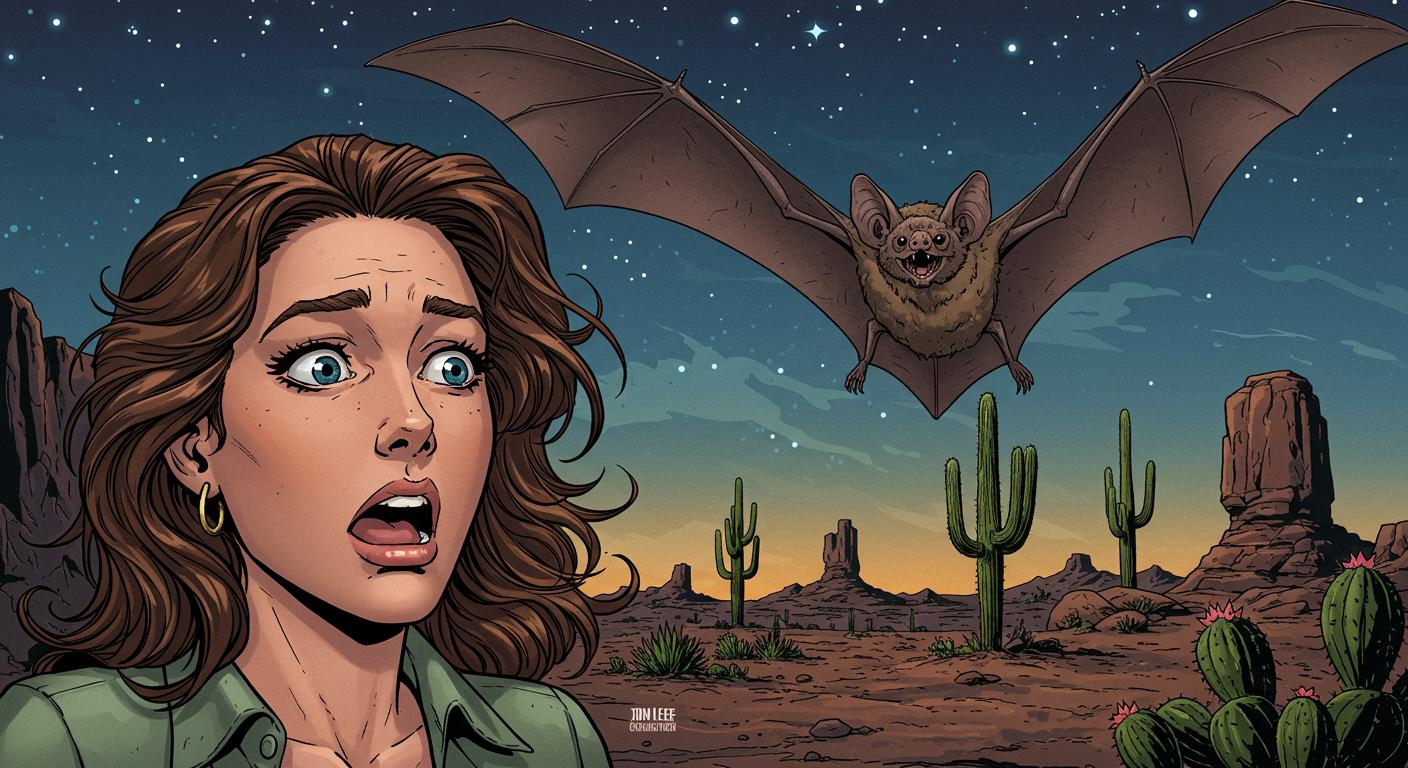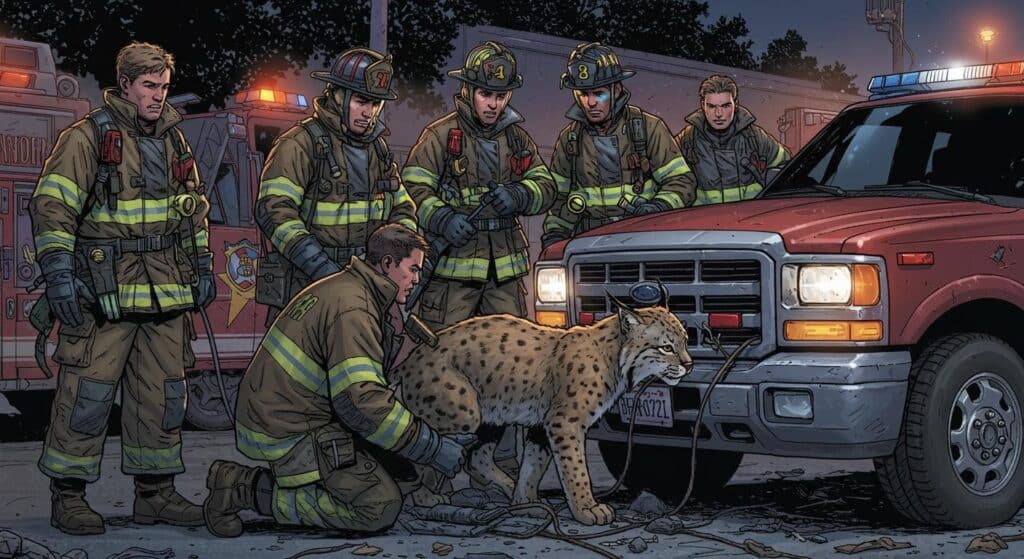Picture yourself on a night in Glen Canyon, Arizona, camera in hand, intent on capturing some cosmic wonders. Now add a sudden, swooping bat, a startled scream, and—against all odds—an accidental, partial bat-in-mouth scenario. For most of us, “bat flew into my mouth” lives alongside “struck by lightning” in the catalogue of things that simply won’t happen to us. But for Erica Kahn, it became both an immediate health scare and an astronomical medical bill, landing her squarely in the annals of “weirdest insurance nightmares you’ve never considered.”
Both KFF Health News and the Daily Mail have detailed Kahn’s ordeal, weaving together a story that’s equal parts caution and classic 21st-century system failure.
Of Bats and Bureaucracy
As chronicled by KFF Health News, Kahn—a Massachusetts resident and biomedical engineer—was photographing the night sky last August when a wild bat managed to position itself squarely between her camera and face. She screamed (a fair, possibly instinctive, response), and the bat, not one to miss an invitation, made its entrance, at least partly, into her mouth. Details on which portion of bat made contact remain elusive and, frankly, unimportant unless you’re reconstructing the event for a public health symposium. According to Kahn, quoted in both outlets, the encounter lasted only seconds but felt much longer. “It seemed longer,” she said, in a deadpan understatement.
The bat quickly made its escape, but concern lingered. Her father, who was also along on the trip and happens to be a physician, advised her to seek immediate rabies prophylaxis. The rationale? Rabies may be rare, but it’s also nearly 100% fatal once symptoms start. Experts cited by KFF Health News point out that exposure to a potentially rabid animal’s saliva—especially via mucous membranes, like those in one’s mouth—is enough cause for a full post-exposure treatment series. One travel medicine specialist, Dr. David Shlim, observed that you “could hardly have a more direct exposure than that.”
Kahn proceeded directly to an emergency room in Flagstaff and began the recommended sequence: four doses of rabies vaccine over two weeks, plus three shots of immunoglobulin. These treatments are life-saving, but, as documented by both sources, they are also staggeringly expensive in the U.S.
Insured? Not So Fast
Here’s where the tale leaves the realm of wildlife accident and enters the curious world of American health insurance fine print. The Daily Mail explains that Kahn, who had recently lost her job, let her employer-based insurance lapse, aiming to save on the $650 monthly COBRA plan. She was between jobs and, like many healthy people, gambled that nothing catastrophic would happen in the meantime.
That bet was lost the moment a bat turned up as an unexpected late-night snack.
In the aftermath, Kahn tried to cover her bases by purchasing private insurance from a Florida company—Innovative Partners LP—the day after the incident. She told both KFF Health News and the Daily Mail that she confirmed with the insurer over the phone that emergencies would be covered, lending the situation a “surely-this-will-be-okay” optimism. The policy cost $311 per month.
But, as her medical bills began to arrive, the reality began to set in. According to her explanation-of-benefits statements reviewed by KFF Health News and corroborated in the Daily Mail report, Kahn owed $20,749, with $17,079 of that attributable to her first emergency room visit—$15,242 just for the rabies and immunoglobulin shots. The “required waiting period for this service has not been met,” her insurance provider stated, pointing to the 30-day gap before coverage began. Both outlets note the almost Kafkaesque result: the policy Kahn bought in a moment of urgency didn’t help because the fine print excluded expenses incurred before coverage kicked in, even in a life-or-death context.
The Daily Mail goes further, highlighting that the plan was a “fixed indemnity” product. Sabrina Corlette, an insurance scholar cited in both articles, explained that such plans pay a set dollar amount for treatment, regardless of actual cost, and don’t have to meet ACA standards. Even a more robust plan, she suggested, might not have covered her immediate care due to typical coverage start dates, an aspect KFF Health News also emphasized.
The Price Tag: Biological and Financial Oddities
A $21,000 medical bill for an encounter lasting milliseconds? According to statements Kahn provided to KFF Health News, the high prices are largely due to the necessary drugs—especially immunoglobulin, a product derived from immunized human blood plasma. U.S. hospitals often administer this treatment in emergency rooms, where hospital markups soar. Lauren Silverstein, a spokesperson for the Northern Arizona Healthcare system quoted by both outlets, said the hospital “does what it can to limit costs” but noted that the price of critical treatments is driven by suppliers, not hospitals. The markup is also a hedge: because hospitals must keep rare but critical drugs like immunoglobulin in inventory, they offset cost by charging a premium when the rare patient comes along.
Globally, this sort of life-saving rabies care is available at a fraction of the U.S. cost. You have to wonder—how many other brush-with-nature stories have ended with someone dryly recounting, “It tasted earthy and sweet…and then it cost more than my car”?
Paperwork Labyrinths and Missed Options
As the Daily Mail describes, Kahn spent months trying to appeal her denied claims. She was told conflicting things about where to send appeals, who needed to sign the paperwork, and why nothing she submitted ever seemed to reach the right desk. The maze of hospital bills, clinics in multiple states (Arizona, Massachusetts, Colorado), and her insurer’s appeals process left her on the hook for nearly all expenses.
Another twist, noted in both outlets but explained in detail by KFF Health News, is the little-known retroactivity clause of COBRA. Those who lose job-based insurance have 60 days to elect COBRA coverage, and once selected (and paid for), it covers medical costs retroactively. Kahn, learning this only after her ordeal began, reflected that she could have avoided the bulk of her $21,000 debt had she kept her previous insurance, even temporarily. She told KFF Health News, “That’s a very big lesson I learned the hard way.” Many people facing a job loss may be unaware of this option—hardly intuitive, and buried in administrative paperwork.
What’s the Takeaway? (Besides Don’t Yawn Near Bats)
For many, the main lesson is that bizarre accidents can find creative ways to empty your wallet, especially in the U.S. medical system. Both KFF Health News and the Daily Mail cite insurance experts and patient advocates who stress the risks of gaps in health coverage—even brief ones—and the complexity of relying on swift, post-accident policy purchases. Limited-benefit plans may sound adequate, but often leave patients exposed, particularly in emergencies. And—because life enjoys an ironic twist—the most jaw-dropping bills tend to follow stories nobody would believe at a party.
Despite the ordeal, Kahn remains an optimist about the outdoors, as she shared with both outlets. “I know what bats taste like now. It’s an earthy, sweet kind of flavor,” she joked. “It’s actually a pretty funny story—if it weren’t for the horrible medical bill that came with it.”
All of which invites a bit of reflection: Are our systems really designed for the “one-in-a-million” events, or just the routine stumble and scrape? What other rules—buried in the policy haystack—sit ready to catch the unlucky (or the unwitting), especially when fate (and a bat) quite literally flies in your face?
Some stories make their mark on your memory. Others, evidently, show up on your credit report.







